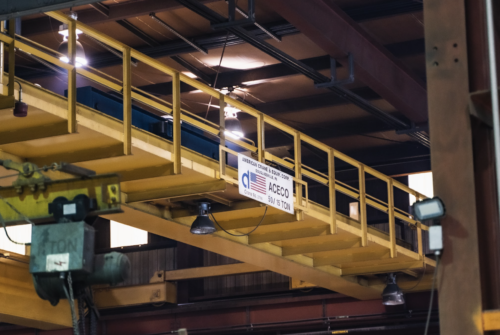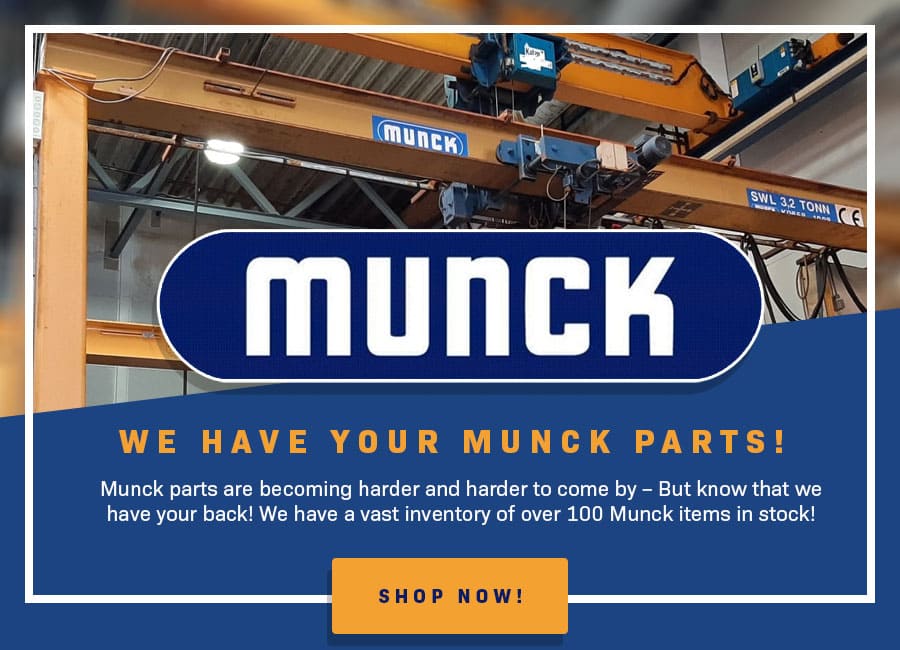
In a previous post, I discussed some basic details about cranes and hoists, and how they work together. As promised, here are some thoughts about the different factors that should be considered when specifying a crane and hoist combination.
I’ve essentially grown up in the overhead handling industry, so I know how complex and time consuming it can be trying to figure out what equipment will best match an operation’s unique overhead handling needs and budget requirements. There are a lot of manufacturers who make a variety of cranes and hoists to handle different kinds of loads, capacities, frequencies of use, and environmental conditions across different industries. Just figuring out where to begin can be daunting. I get it.
That’s why I recommend considering the following six factors as you begin your crane and hoist investment journey. Understanding and having insight into each of these areas and how they impact the overall specification and buying process will help you to make a more informed decision.
- The Load. All crane and hoist manufacturers need to know what you’re lifting, as well as its dimensions, total weight, surface characteristics, uniformity (or not) of shape, material, construction, and fragility. Also, if the load will be wet, dry, dusty, oily, or in some other condition as it’s handled. Further, it’s important to note if more than one type of load needs to be handled by the crane and hoist. Depending on how different each load is from another, more than one combination of overhead lifting and handling solution might be recommended.
- The Frequency of Use. How often and at what percentage of its maximum load capacity the crane and hoist will be used — also known as Duty Cycle Requirements — has a significant impact on the service class an application requires. There are six crane and hoist service classes. Specifying equipment engineered to meet the appropriate class for your application will ensure its safety and longevity. Briefly, the six classes are:
- Class A: Standby or Infrequent Service. These are often applications where precise handling of equipment at slow speeds with long idle periods between lifts occur.
- Class B: Light Service. Light use, low speed applications, with loads ranging from none to full rated capacity at a rate of two to five lifts per hour averaging 10 feet per lift.
- Class C: Moderate Service. Loads average 50% of the rated capacity with five to 10 lifts per hour at an average of 15 feet.
- Class D: Heavy Service. Loads approaching 50% to 65% of rated capacity are handled constantly and at high speeds, with 10 to 20 lifts per hour at an average of 15 feet.
- Class E: Severe Service. Near continuous use with 20 or more lifts per hour at or near 100% of the rated capacity, often in harsh environments.
- Class F: Continuous Severe Service. Continuous use in harsh conditions at near 100% of the rated capacity. These cranes may be custom designed for high reliability in critical operations.
- The Required Speed. How quickly the crane must travel and hoist must lift and lower in order to keep up with production processes is critical to ensuring overall operational efficiency. A system that is too fast or too slow can compromise safety.
- The Operating Environment. Cranes and hoists are used both indoors and outside; either environment can have its own specific challenges including temperature, hazardous conditions, dust, heat, humidity, liquids, oils, fibers, corrosive chemicals, and more. Depending on the application, a custom crane and hoist combination may be recommended to increase reliability and service life.
- The Expected Longevity. Routine maintenance is a must for all cranes and hoists to ensure they operate safely and reliably throughout their entire lifespan. How often (or not) an operation wants the equipment to run between servicing, to replace key components, or to replace the entire system is an important consideration when designing and specifying a crane and hoist.
- The Budget. While it can be tempting to pick the crane and hoist combination priced the lowest of all options, chances are that system will not be engineered to meet the actual requirements of the application. A properly engineered system likely will not be the least expensive, but it has a better chance of operating for a longer period of time with fewer operational issues, less downtime, and a higher degree of safety. Further, there are costs associated with all capital equipment investments beyond the initial purchase price. Be sure to account for installation, spare parts, maintenance agreements, service contracts, and desired level of field service team responsiveness to issues when totaling up the costs of the equipment.
Other Resources to Help You Specify the Right Crane and Hoist
Beyond the considerations outlined above, there are a variety of buyer’s guide resources available. These are intended to help novice and experienced buyers of overhead lifting systems better evaluate their options and determine the optimal crane and hoist solution for their application.
The definitive resource is published by the Crane Manufacturers Association of America (CMAA), an independent trade association affiliated with MHI. CMAA’s member companies are the world’s top providers of overhead traveling crane equipment and related products. As the leading advocates for the safe application and operation of overhead handling equipment, CMAA develops, publishes, and routinely reviews and updates design safety standards and specifications for a variety of crane systems and components. (Fun fact: I happen to be currently serving as the association’s President).
The CMAA Buyer’s Guide — available as a free download in American Crane’s online Resource Center in the eBooks section — is actually a collection of four documents:
- Below-the-Hook Lifting Device contains a series of questions to be answered about the loads the device will handle (weight, dimensions, symmetry, fragility, material, surface conditions, and more); operating conditions; description of current handling process; and more.
- Top Running & Under Running Single Girder Electric Traveling Cranes Utilizing Under Running Trolley Hoists includes key design and engineering questions to ask when vetting potential suppliers about their manufacturing processes specific to CMAA Specification 74; an inquiry data sheet which includes a series of questions about the space in which the crane and hoist will operate; operating conditions; desired speeds; load(s) to be handled; and more. It also includes an overview of crane service classifications to help buyers identify the actual conditions in which the crane and hoist will operate, and a series of recommended bridge, trolley, and hoist speeds based on the system’s total load capacity.
- Top Running & Gantry Type Multiple Girder Electric Overhead Traveling Cranes features the same inquiry points in the Single Girder version, only specific to CMAA Specification 70.
- The Buyer’s Guide Companion pertains to both the Single and Multiple Girder Buyer’s Guides. It offers detailed explanations of why it is important to ask potential suppliers each question about adherence to CMAA Specifications 74 and 70, and how those answers may impact the safety, function, operation, and lifespan of the selected crane and hoist combination.
Additionally, at American Crane, we’ve developed two separate publications that supplement CMAA’s guides: How to Choose the Right Crane: A Crane Buyer’s Guide and How to Choose the Right Hoist: A Hoist Buyer’s Guide. Both of these documents are also free downloads located in the eBooks section of our online Resource Center. Whereas the CMAA documents are more engineering focused, our publications offer a broader, less technical perspective on key crane and hoist selection considerations, as well as an overview of the types of solutions available.
Finally, I urge you to leverage the knowledge of an experienced crane and hoist equipment professional, including suppliers, manufacturers, and vendors. While publications are a great resource, nothing compares to partnering with a company that has the breadth of expertise in designing and engineering a broad range of crane and hoist solutions. American Crane’s experts are always available to help you better evaluate your overhead handling options, as well as determine the optimal solution for your needs. Connect with a project specialist today.





